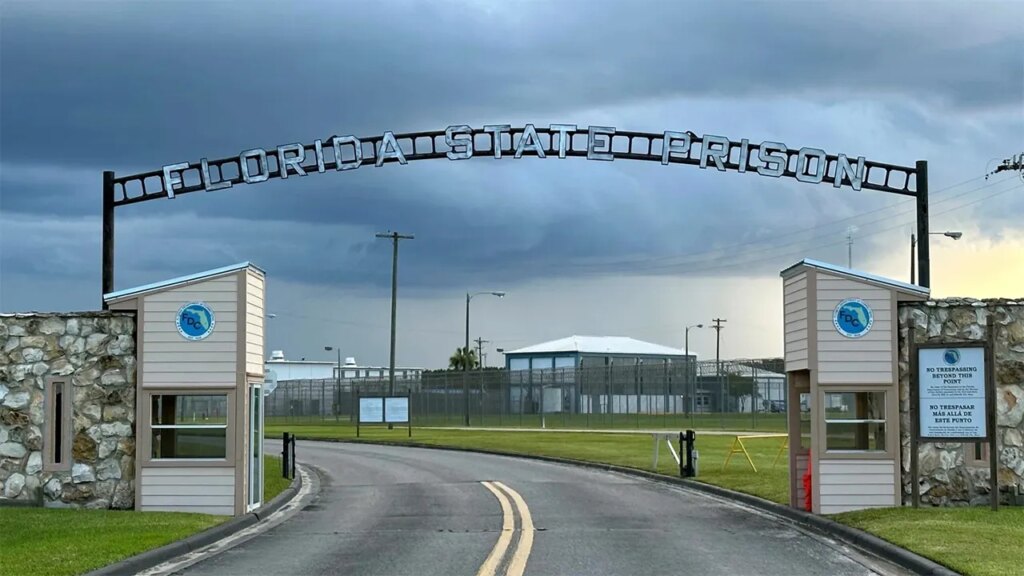On Tuesday, Florida executed its 15th inmate of the year, marking a record under Gov. Ron DeSantis. Norman Mearle Grim Jr., aged 65, was executed following his conviction for the 1998 rape and murder of his neighbor, Cynthia Campbell. The execution was carried out via lethal injection at the Florida State Prison, where Grim did not opt for any final words before his death.
| Article Subheadings |
|---|
| 1) Background of the Case |
| 2) Details of the Execution |
| 3) Crime and Conviction |
| 4) Florida’s Execution Trends |
| 5) Upcoming Executions |
Background of the Case
The case of Norman Mearle Grim Jr. traces back over two decades. In July 1998, the disappearance of Cynthia Campbell, a 30-year-old woman, raised alarms in her community. Her family reported her missing when she did not return home. A thorough search ensued, culminating in the grim discovery of her body by a fisherman near the Pensacola Bay Bridge.
Grim, a former neighbor of Campbell, quickly became a person of interest due to the accumulation of physical evidence linking him to the crime scene. Law enforcement officials collected numerous samples, including DNA, further solidifying their case against Grim. This foundation of evidence would eventually lead to his arrest and subsequent trial.
Details of the Execution
The execution was conducted on October 28, 2025, at 6:14 p.m. local time in the Florida State Prison. Grim was administered a three-drug lethal injection cocktail. The Florida Department of Corrections confirmed that there were no complications during the procedure. Grim declined to make a final statement, simply replying, “No sir,” when asked if he had any last words.
Officials reported that Grim’s last meal included fried pork chops, mashed potatoes, and a chocolate milkshake, although he did not receive visitors or spiritual guidance prior to the execution. This event marks a significant moment in Florida’s criminal justice history as the state consistently pushes towards an unprecedented number of executions.
Crime and Conviction
The trial of Grim unveiled horrific details about the murder of Cynthia Campbell. The prosecution presented evidence indicating that Campbell had endured substantial violence before her death. Autopsy reports revealed multiple blunt-force injuries to her face and head. This level of brutality suggested a violent struggle, corroborated by reports of blunt-force trauma consistent with being struck by a hammer.
In addition to the blunt-force injuries, Campbell was stabbed 11 times, seven of which penetrated her heart. Prosecutors emphasized the brutality of the crime, arguing this demonstrated Grim’s intent to cause severe harm and thus warranted the death penalty. The DNA evidence presented at trial conclusively connected Grim to the scene, affirming his guilt. Following extensive legal proceedings, Grim was sentenced to death.
Florida’s Execution Trends
Florida has become the state with the highest number of executions in recent years, breaking its previous records. The U.S. Supreme Court reinstated the death penalty in 1976, and Florida’s previous high of eight executions in a single year was recorded in 2014. This year alone, Florida has far outpaced Texas and Alabama, who executed five inmates each.
The increase in executions raises questions about the state’s policies and the ongoing debate surrounding capital punishment. Officials noted that Grim’s execution rounds off a historic year for Florida, showcasing the state’s increasingly assertive stance on enforcing the death penalty. The circumstances surrounding these executions indicate a regional shift towards more frequent use of capital punishment.
Upcoming Executions
Florida has additional executions scheduled for November 2025. The state plans to execute Bryan Fredrick Jennings, 66, on November 13, convicted of the 1979 rape and murder of a 6-year-old girl. Two weeks later, Richard Barry Randolph, 63, is set to face execution on November 20 for the 1988 murder of his former boss, adding to the growing list of executions this year.
Legal experts continue to monitor these developments closely, examining the implications for the state’s justice system and the broader national conversation on capital punishment. These upcoming executions may spark renewed discussions regarding the ethics and efficacy of the death penalty as a form of punishment in Florida.
| No. | Key Points |
|---|---|
| 1 | Norman Mearle Grim Jr. was executed on October 28, 2025, marking Florida’s 15th execution this year. |
| 2 | The execution followed his conviction for the brutal rape and murder of Cynthia Campbell in 1998. |
| 3 | Florida is experiencing a surge in executions, becoming the state with the highest number in the U.S. |
| 4 | Upcoming executions include Bryan Jennings and Richard Randolph, scheduled for November 2025. |
| 5 | The rise in executions has sparked debates surrounding the ethics of capital punishment. |
Summary
The execution of Norman Mearle Grim Jr. underscores a pivotal moment in Florida’s judicial history, as the state navigates an unprecedented number of capital punishments. Grim’s case, characterized by its violent nature, serves as a stark reminder of the complexities surrounding crime and punishment. As Florida prepares for more executions in the coming months, the debate surrounding capital punishment continues to provoke strong opinions across various sectors of society.
Frequently Asked Questions
Question: What was the crime committed by Norman Mearle Grim Jr.?
Norman Mearle Grim Jr. was convicted of raping and murdering his neighbor, Cynthia Campbell, in 1998, using a hammer and stabbing her multiple times.
Question: How is the death penalty carried out in Florida?
In Florida, executions are carried out using a three-drug lethal injection protocol consisting of a sedative, a paralytic agent, and a drug that stops the heart.
Question: Why has Florida increased the number of executions recently?
The increase in executions in Florida is attributed to a legislative push for stricter enforcement of the death penalty and a growing number of convictions leading to death sentences over recent years.
